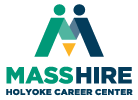RESUMES ARE IMPORTANT!
A good resume has the power to open doors. It describes your qualifications and what makes you unique. To stand out among other applicants, you need a resume that markets your strengths and matches the job. A great resume will grab the attention of employers and recruiters, sell your strongest skills and accomplishments, show how you’re a match for a position or project, and most importantly, gets you a job interview! Read below about the types of resumes to see which is right for you!
Types of Resumes
Chronological Resume: Chronological is the most common type of resume. It lists your work history, with the most recent positions shown first. Employers typically prefer this type of resume because it’s easy to see what jobs you have held and when you worked at them. This approach works well when you have an extensive work history in the same field as the position for which you are applying. Chronological, however, does not work well when you are switching careers or have extensive gaps in your work history. The lack of relevant experience and time out of the workforce will be front and center and may quickly move your resume out of consideration. Click here to view or print a chronological resume template.
Functional Resume: A functional or skills resume can be helpful when you are starting a new career. It focuses on your background and skills rather than your work history. Functional resumes have a written summary of qualifications and accomplishments. Click here to view or print a functional resume template.
Combination Resume: A combination resume combines the two. It lists skills first and follows with work history. In most cases, including your employment history is valuable, and without it, your resume may be rejected by applicant tracking systems, used by many employers for their initial screening of applications. Click here to view or print a functional resume template.
All resumes should be targeted. This means that you customize your resume to highlight the skills and experience that are most relevant to the available position. To create a targeted resume, you take your experience, credentials, and education that best match the job posting you are applying for and include them in the Summary of Qualifications section at the top of your resume. Or you can edit your resume so your skills and experience are as close a match as possible to the job description. You can also make sure your resume includes the keywords used in the job posting.
The above information adapted from CareerOneStop. Sponsored by the U.S. Department of Labor. A proud partner of the American Job Center Network.
Video Courtesy of Goodwill Community Foundations. Check out the rest of their website at www.gcflearnfree.org
Have a staff Member Review Your resume! Are you already registered with MHH? Are you not sure if your resume represents you well? Please email resumereview@masshireholyoke.org Please upload your resume for review and possible matching with job openings in our TALENT BANK. You will be contacted by a staff member.


